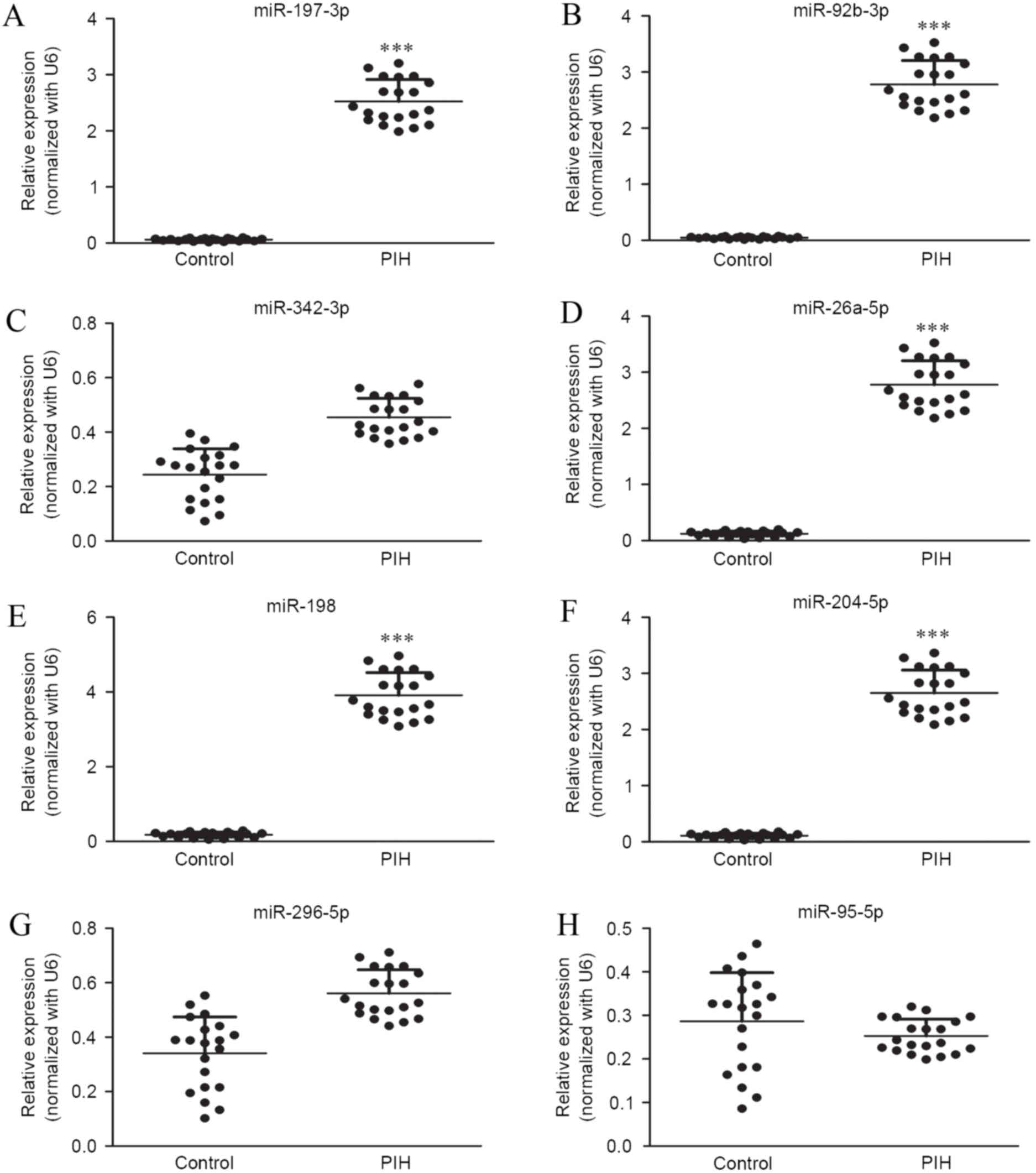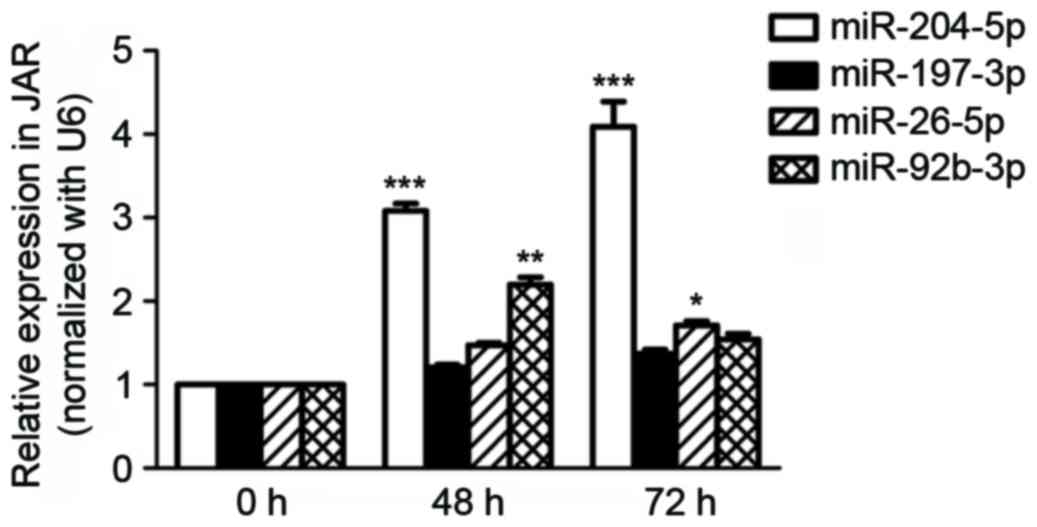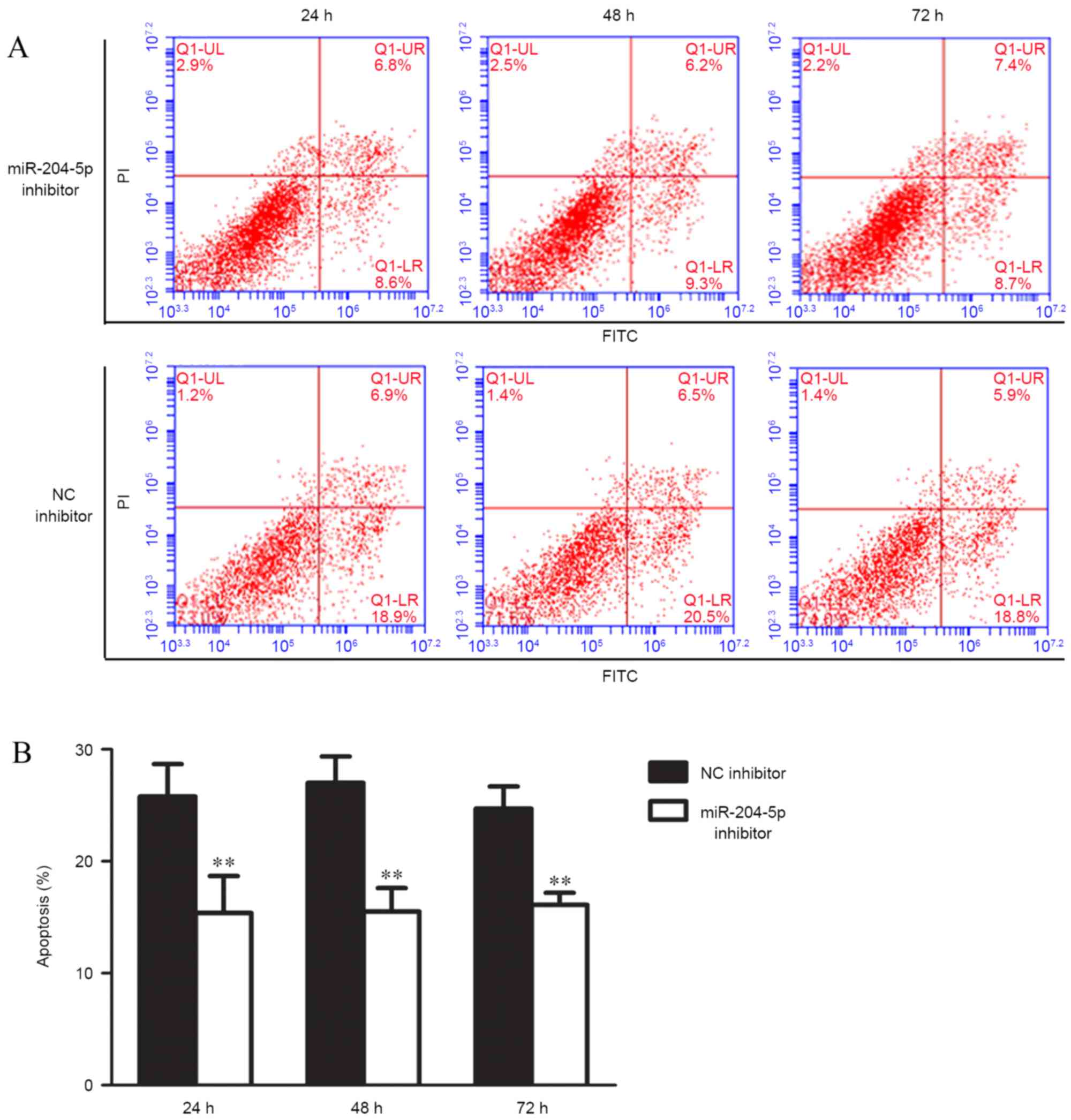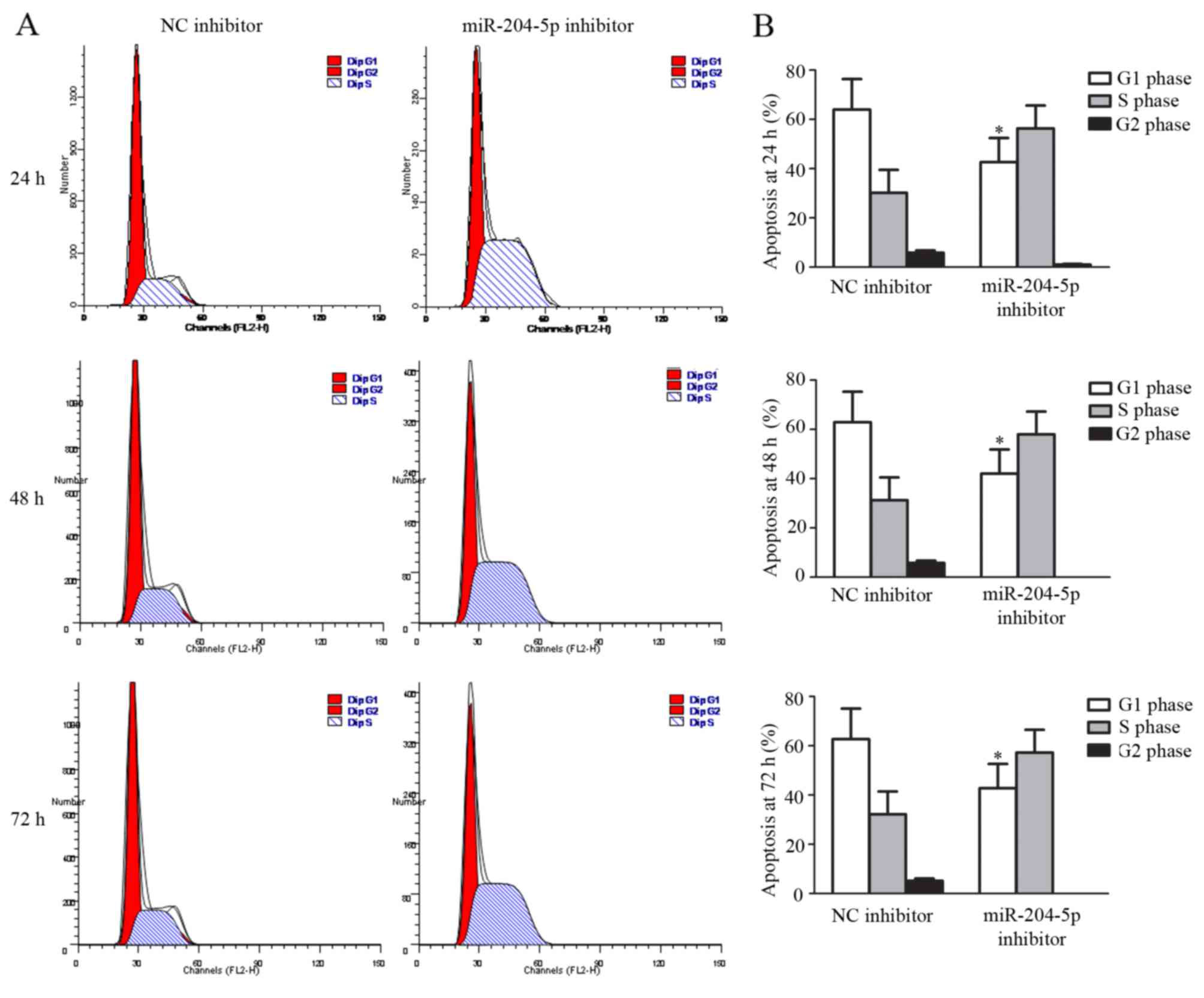|
1
|
Li S, Xiong X, Harville E, Zhang T, Sun D,
Fernandez C, Krousel-Wood M, Chen W and Whelton PK: Childhood risk
factors and pregnancy-induced hypertension: The bogalusa heart
study. Am J Hypertens. 29:1206–1211. 2016. View Article : Google Scholar : PubMed/NCBI
|
|
2
|
Kintiraki E, Papakatsika S, Kotronis G,
Goulis DG and Kotsis V: Pregnancy-induced hypertension. Hormones
(Athens). 14:211–223. 2015. View Article : Google Scholar : PubMed/NCBI
|
|
3
|
Magee LA, Pels A, Helewa M, Rey E and von
Dadelszen P: Canadian Hypertensive Disorders of Pregnancy Working
Group: Diagnosis, evaluation, and management of the hypertensive
disorders of pregnancy: Executive summary. J Obstet Gynaecol Can.
36:416–441. 2014. View Article : Google Scholar : PubMed/NCBI
|
|
4
|
Caetano M, Ornstein MP, von Dadelszen P,
Hannah ME, Logan AG, Gruslin A, Willan A and Magee LA: A survey of
Canadian practitioners regarding diagnosis and evaluation of the
hypertensive disorders of pregnancy. Hypertens Pregnancy.
23:197–209. 2004. View Article : Google Scholar : PubMed/NCBI
|
|
5
|
Magee LA, Helewa M, Moutquin JM and von
Dadelszen P: Hypertension Guideline Committee; Strategic Training
Initiative in Research in the Reproductive Health Sciences
(STIRRHS) Scholars: Diagnosis, evaluation, and management of the
hypertensive disorders of pregnancy. J Obstet Gynaecol Can.
30:(Suppl 3). S1–S48. 2008. View Article : Google Scholar : PubMed/NCBI
|
|
6
|
Tranquilli AL: Hypertension during
pregnancy is associated with increased risk of later cardiovascular
disease, kidney disease and diabetes. Evid Based Nurs. 17:36–37.
2014. View Article : Google Scholar : PubMed/NCBI
|
|
7
|
Kitson R, Williams V and Howell C:
Caesarean section in a parturient with type III spinal muscular
atrophy and pre-eclampsia. Anaesthesia. 59:94–95. 2004. View Article : Google Scholar : PubMed/NCBI
|
|
8
|
Heimrath J, Czekanski A, Krawczenko A and
Dus D: The role of endothelium in the pathogenesis of
pregnancy-induced hypertension. Postepy Hig Med Dosw (Online).
61:48–57. 2007.PubMed/NCBI
|
|
9
|
Padmanabhan S, Caulfield M and Dominiczak
AF: Genetic and molecular aspects of hypertension. Circ Res.
116:937–959. 2015. View Article : Google Scholar : PubMed/NCBI
|
|
10
|
Chen Z, Xu F, Wei Y, Liu F and Qi H:
Angiotensin converting enzyme insertion/deletion polymorphism and
risk of pregnancy hypertensive disorders: A meta-analysis. J Renin
Angiotensin Aldosterone Syst. 13:184–195. 2012. View Article : Google Scholar : PubMed/NCBI
|
|
11
|
Lycoudi A, Mavreli D, Mavrou A,
Papantoniou N and Kolialexi A: miRNAs in pregnancy-related
complications. Expert Rev Mol Diagn. 15:999–1010. 2015. View Article : Google Scholar : PubMed/NCBI
|
|
12
|
Ura B, Feriotto G, Monasta L, Bilel S,
Zweyer M and Celeghini C: Potential role of circulating microRNAs
as early markers of preeclampsia. Taiwan J Obstet Gynecol.
53:232–234. 2014. View Article : Google Scholar : PubMed/NCBI
|
|
13
|
Zou Q, Li J, Hong Q, Lin Z, Wu Y, Shi H
and Ju Y: Prediction of MicroRNA-disease associations based on
social network analysis methods. Biomed Res Int. 2015:8105142015.
View Article : Google Scholar : PubMed/NCBI
|
|
14
|
Van Wynsberghe PM, Chan SP, Slack FJ and
Pasquinelli AE: Analysis of microRNA expression and function.
Methods Cell Biol. 106:219–252. 2011. View Article : Google Scholar : PubMed/NCBI
|
|
15
|
Choi SY, Yun J, Lee OJ, Han HS, Yeo MK,
Lee MA and Suh KS: MicroRNA expression profiles in placenta with
severe preeclampsia using a PNA-based microarray. Placenta.
34:799–804. 2013. View Article : Google Scholar : PubMed/NCBI
|
|
16
|
Wu L, Zhou H, Lin H, Qi J, Zhu C, Gao Z
and Wang H: Circulating microRNAs are elevated in plasma from
severe preeclamptic pregnancies. Reproduction. 143:389–397. 2012.
View Article : Google Scholar : PubMed/NCBI
|
|
17
|
Yu Y, Wang L, Liu T and Guan H:
MicroRNA-204 suppresses trophoblast-like cell invasion by targeting
matrix metalloproteinase-9. Biochem Biophys Res Commun.
463:285–291. 2015. View Article : Google Scholar : PubMed/NCBI
|
|
18
|
Lauschke VM, Mkrtchian S and
Ingelman-Sundberg M: The role of microRNAs in liver injury at the
crossroad between hepatic cell death and regeneration. Biochem
Biophys Res Commun. Oct 24–2016.(Epub ahead of print). doi:
10.1016/j.bbrc.2016.10.084. PubMed/NCBI
|
|
19
|
Abe E, Matsubara K, Ochi H, Ito M, Oka K
and Kameda K: Elevated levels of adhesion molecules derived from
leukocytes and endothelial cells in patients with pregnancy-induced
hypertension. Hypertens Pregnancy. 22:31–43. 2003. View Article : Google Scholar : PubMed/NCBI
|
|
20
|
Kamiya T, Kwon AH, Kanemaki T, Matsui Y,
Uetsuji S, Okumura T and Kamiyama Y: A simplified model of hypoxic
injury in primary cultured rat hepatocytes. In Vitro Cell Dev Biol
Anim. 34:131–137. 1998. View Article : Google Scholar : PubMed/NCBI
|
|
21
|
Cikos S, Bukovská A and Koppel J: Relative
quantification of mRNA: Comparison of methods currently used for
real-time PCR data analysis. BMC Mol Biol. 8:1132007. View Article : Google Scholar : PubMed/NCBI
|
|
22
|
Kobata A and Takeuchi M: Structure,
pathology and function of the N-linked sugar chains of human
chorionic gonadotropin. Biochim Biophys Acta. 1455:315–326. 1999.
View Article : Google Scholar : PubMed/NCBI
|
|
23
|
Abu-Absi NR, Zamamiri A, Kacmar J, Balogh
SJ and Srienc F: Automated flow cytometry for acquisition of
time-dependent population data. Cytometry A. 51:87–96. 2003.
View Article : Google Scholar : PubMed/NCBI
|
|
24
|
Holmes KL, Otten G and Yokoyama WM: Flow
cytometry analysis using the Becton Dickinson FACS Calibur. Curr
Protoc Immunol Chapter. 5:Unit 5.4. 2002. View Article : Google Scholar
|
|
25
|
Livak KJ and Schmittgen TD: Analysis of
relative gene expression data using real-time quantitative PCR and
the 2(−Delta Delta C(T)) Method. Methods. 25:402–408. 2001.
View Article : Google Scholar : PubMed/NCBI
|
|
26
|
Mouillet JF, Mishima T, Paffaro AM, Parks
TW, Ziegler JA, Chu T and Sadovsky Y: The expression and
post-transcriptional regulation of FSTL1 transcripts in placental
trophoblasts. Placenta. 36:1231–1238. 2015. View Article : Google Scholar : PubMed/NCBI
|
|
27
|
Jia W, Wu Y, Zhang Q, Gao G, Zhang C and
Xiang Y: Identification of four serum microRNAs from a genome-wide
serum microRNA expression profile as potential non-invasive
biomarkers for endometrioid endometrial cancer. Oncol Lett.
6:261–267. 2013.PubMed/NCBI
|
|
28
|
Tarasov VA, Matishov DG, Shin EF, Boiko
NV, Timoshkina NN, Makhotkin MA, Lomonosov AM, Kirpii AA, Kit OI
and Maksimov AY: Coordinated aberranit expression of miRNAs in
colon cancer. Genetika. 50:1232–1244. 2014.(In Russian). PubMed/NCBI
|
|
29
|
Liu L, Wang J, Li X, Ma J, Shi C, Zhu H,
Xi Q, Zhang J, Zhao X and Gu M: MiR-204-5p suppresses cell
proliferation by inhibiting IGFBP5 in papillary thyroid carcinoma.
Biochem Biophys Res Commun. 457:621–626. 2015. View Article : Google Scholar : PubMed/NCBI
|
|
30
|
Zhang B, Yin Y, Hu Y, Zhang J, Bian Z,
Song M, Hua D and Huang Z: MicroRNA-204-5p inhibits gastric cancer
cell proliferation by downregulating USP47 and RAB22A. Med Oncol.
32:3312015. View Article : Google Scholar : PubMed/NCBI
|
|
31
|
Sümbül AT, Göğebakan B, Ergün S, Yengil E,
Batmacı CY, Tonyalı Ö and Yaldız M: miR-204-5p expression in
colorectal cancer: An autophagy-associated gene. Tumour Biol.
35:12713–12719. 2014. View Article : Google Scholar : PubMed/NCBI
|
|
32
|
Bao W, Wang HH, Tian FJ, He XY, Qiu MT,
Wang JY, Zhang HJ, Wang LH and Wan XP: A TrkB-STAT3-miR-204-5p
regulatory circuitry controls proliferation and invasion of
endometrial carcinoma cells. Mol Cancer. 12:1552013. View Article : Google Scholar : PubMed/NCBI
|
|
33
|
Mikhaylova O, Stratton Y, Hall D, Kellner
E, Ehmer B, Drew AF, Gallo CA, Plas DR, Biesiada J, Meller J and
Czyzyk-Krzeska MF: VHL-regulated MiR-204 suppresses tumor growth
through inhibition of LC3B-mediated autophagy in renal clear cell
carcinoma. Cancer Cell. 21:532–546. 2012. View Article : Google Scholar : PubMed/NCBI
|
|
34
|
Atala A: Re: VHL-Regulated miR-204
suppresses tumor growth through inhibition of LC3B-mediated
autophagy in renal clear cell carcinoma. J Urol. 188:24342012.
View Article : Google Scholar
|
|
35
|
Chung TK, Lau TS, Cheung TH, Yim SF, Lo
KW, Siu NS, Chan LK, Yu MY, Kwong J, Doran G, et al: Dysregulation
of microRNA-204 mediates migration and invasion of endometrial
cancer by regulating FOXC1. Int J Cancer. 130:1036–1045. 2012.
View Article : Google Scholar : PubMed/NCBI
|
|
36
|
Qiu YH, Wei YP, Shen NJ, Wang ZC, Kan T,
Yu WL, Yi B and Zhang YJ: miR-204 inhibits epithelial to
mesenchymal transition by targeting slug in intrahepatic
cholangiocarcinoma cells. Cell Physiol Biochem. 32:1331–1341. 2013.
View Article : Google Scholar : PubMed/NCBI
|
|
37
|
Lee Y, Yang X, Huang Y, Fan H, Zhang Q, Wu
Y, Li J, Hasina R, Cheng C, Lingen MW, et al: Network modeling
identifies molecular functions targeted by miR-204 to suppress head
and neck tumor metastasis. PLoS Comput Biol. 6:e10007302010.
View Article : Google Scholar : PubMed/NCBI
|
|
38
|
Pule GD, Mowla S, Novitzky N and Wonkam A:
Hydroxyurea down-regulates BCL11A, KLF-1 and MYB through
miRNA-mediated actions to induce γ-globin expression: Implications
for new therapeutic approaches of sickle cell disease. Clin Transl
Med. 5:152016. View Article : Google Scholar : PubMed/NCBI
|
|
39
|
Nevo O, Lee DK and Caniggia I: Attenuation
of VEGFR-2 expression by sFlt-1 and low oxygen in human placenta.
PLoS One. 8:e811762013. View Article : Google Scholar : PubMed/NCBI
|
|
40
|
Kleinrouweler CE, Wiegerinck MM,
Ris-Stalpers C, Bossuyt PM, van der Post JA, von Dadelszen P, Mol
BW and Pajkrt E: EBM CONNECT Collaboration: Accuracy of circulating
placental growth factor, vascular endothelial growth factor,
soluble fms-like tyrosine kinase 1 and soluble endoglin in the
prediction of pre-eclampsia: A systematic review and meta-analysis.
BJOG. 119:778–787. 2012. View Article : Google Scholar : PubMed/NCBI
|
|
41
|
Liu Y, Zhao Y, Yu A, Zhao B, Gao Y and Niu
H: Diagnostic accuracy of the soluble Fms-like tyrosine
kinase-1/placental growth factor ratio for preeclampsia: A
meta-analysis based on 20 studies. Arch Gynecol Obstet.
292:507–518. 2015. View Article : Google Scholar : PubMed/NCBI
|
|
42
|
Dubova EA, Pavlov KA, Lyapin VM,
Shchyogolev AI and Sukhikh GT: Vascular endothelial growth factor
and its receptors in the placental villi of pregnant patients with
pre-eclampsia. Bull Exp Biol Med. 154:792–795. 2013. View Article : Google Scholar : PubMed/NCBI
|
|
43
|
Martinez-Fierro ML, Garza-Veloz I,
Carrillo-Sanchez K, Martinez-Gaytan V, Cortes-Flores R,
Ochoa-Torres MA, Guerrero GG, Rodriguez-Sanchez IP,
Cancela-Murrieta CO, Zamudio-Osuna M, et al: Expression levels of
seven candidate genes in human peripheral blood mononuclear cells
and their association with preeclampsia. Hypertens Pregnancy.
33:191–203. 2014. View Article : Google Scholar : PubMed/NCBI
|














